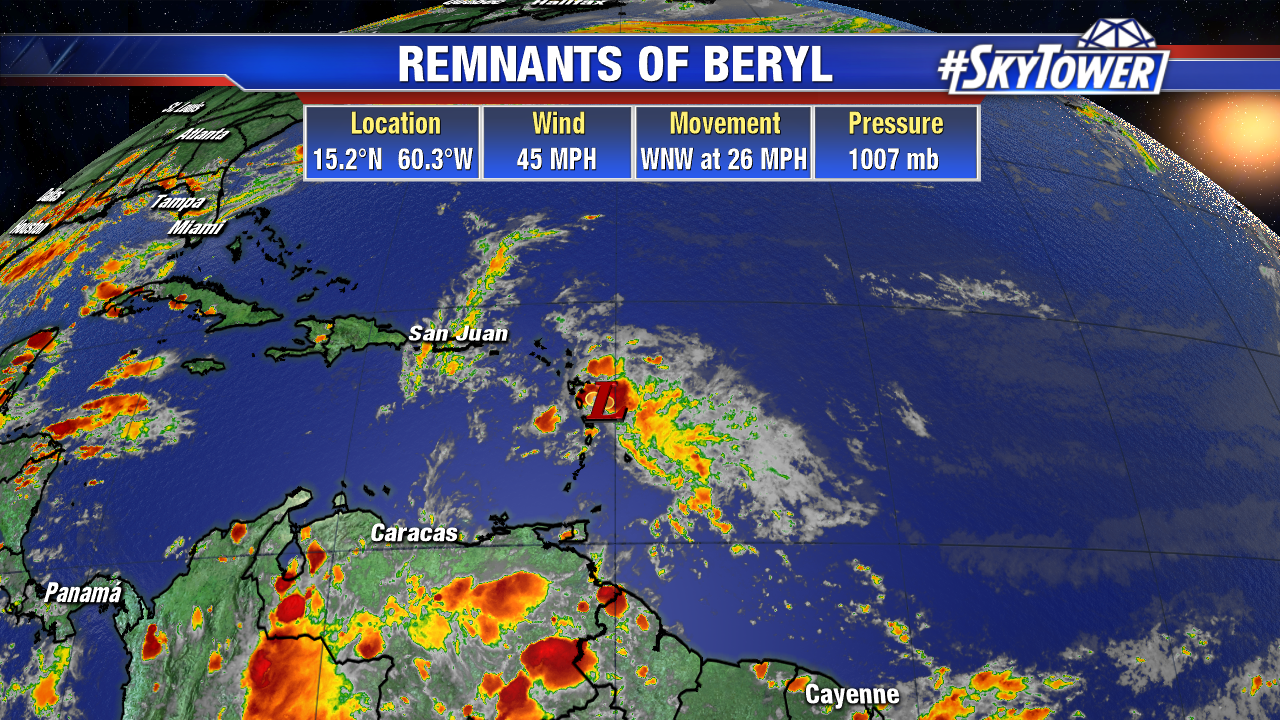Impact on Jamaica

Hurricane beryl jamaica – Hurricane Beryl’s impact on Jamaica was devastating, leaving behind a trail of destruction and disruption.
Jamaica did get hit hard by Hurricane Beryl, but thankfully the damage wasn’t as bad as it could have been. The storm then moved on to Barbados , where it caused even more damage. However, Jamaica was still affected by the storm’s outer bands, which brought heavy rain and winds to the island.
Overall, Hurricane Beryl was a powerful storm that caused significant damage in both Jamaica and Barbados.
The hurricane brought torrential rains, causing widespread flooding that inundated homes and businesses. The strong winds uprooted trees, damaged power lines, and tore apart buildings. The damage to infrastructure, homes, and businesses was extensive, leaving many without shelter, electricity, or access to essential services.
Hurricane Beryl deh yah! Jamaica brace up. We ago get some rain and wind. Fi di latest update, check out di national hurricane center beryl website. Stay safe and listen to di authorities.
Economic and Social Consequences
The economic and social consequences of the hurricane were severe. The tourism industry, a major source of income for Jamaica, was severely impacted as hotels and resorts were damaged or destroyed. The agricultural sector also suffered significant losses, as crops were destroyed and livestock was killed. The hurricane also disrupted transportation and communication networks, making it difficult for people to access food, water, and medical care.
Meteorological Analysis: Hurricane Beryl Jamaica

Hurricane Beryl, the second named storm of the 2022 Atlantic hurricane season, developed from a tropical wave on July 11th. The wave moved westward across the tropical Atlantic, gradually organizing into a tropical depression on July 12th and a tropical storm on July 13th. Beryl continued to intensify as it approached Jamaica, reaching hurricane strength on July 14th.
The hurricane’s path took it just south of Jamaica, with the center of the storm passing about 100 miles south of Kingston. Beryl made landfall in Cuba on July 15th as a Category 1 hurricane, bringing heavy rainfall and flooding to the island. The storm then weakened as it crossed Cuba and emerged into the Gulf of Mexico.
Meteorological Factors Contributing to Beryl’s Development
Several meteorological factors contributed to the development and strength of Hurricane Beryl. These factors included:
- Warm ocean temperatures: The tropical Atlantic waters where Beryl formed were unusually warm, providing ample energy for the storm to develop and intensify.
- Low wind shear: Wind shear is the difference in wind speed and direction between different levels of the atmosphere. Low wind shear allows hurricanes to organize and intensify more easily.
- Upper-level outflow: Beryl had a well-developed outflow of air in the upper atmosphere, which helped to strengthen the storm’s circulation.
Comparison to Other Hurricanes
Hurricane Beryl was a relatively weak hurricane, with maximum sustained winds of 85 mph. However, it was still strong enough to cause significant damage in Jamaica and Cuba. Beryl was not as strong as some other hurricanes that have impacted the region in recent years, such as Hurricane Matthew in 2016 and Hurricane Irma in 2017. However, it was stronger than Tropical Storm Eta, which caused widespread flooding in Jamaica in 2020.
Response and Recovery
In the immediate aftermath of Hurricane Beryl, local authorities and aid organizations mobilized to provide assistance to affected communities. The Jamaican government declared a state of emergency, deployed the Jamaica Defence Force to assist with search and rescue operations, and provided emergency supplies to those in need.
International aid organizations, including the United Nations and the Red Cross, also provided support. They provided food, water, shelter, and medical assistance to those affected by the hurricane.
Long-Term Recovery and Rebuilding
The long-term recovery and rebuilding process in Jamaica is ongoing. The government has allocated funds for the reconstruction of damaged infrastructure, including roads, bridges, and schools. The government is also working with international organizations to provide support for affected communities.
Best Practices and Lessons Learned, Hurricane beryl jamaica
The response to Hurricane Beryl has highlighted the importance of early warning systems, disaster preparedness, and coordination between local authorities and aid organizations. The Jamaican government has implemented a number of measures to improve its disaster response capabilities, including the establishment of a national emergency operations center and the development of a comprehensive disaster management plan.